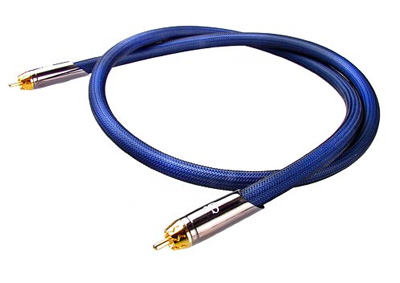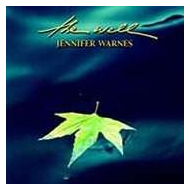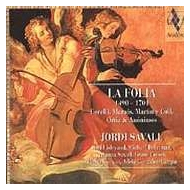You are reading the older HTML site
Positive Feedback ISSUE
12march/april 2004
ps audio
xStream interconnects
as reviewed by Vade Forrester

VADE FORRESTER'S SYSTEM LOUDSPEAKERS ELECTRONICS SOURCES CABLES ACCESSORIES
|
I like my music lively, colorful, but smooth. Coherence and accurate harmonic structure are high on the list of desirable characteristics that I demand from a hi-fi. Most of the music I listen to can be found in the "Classical" section at Borders, but that section includes everything from almost inaudible solo clavichord to roaring pipe organ to string quartets to huge symphonic groups to solo vocalists to 100-person choirs, so I need my audio system to do everything well.
My system is comprised of a pair of Second ReTHM loudspeakers driven by an SET amplifier, augmented by a Hsu VTF-3 subwoofer crossed over at 55 Hz. Although the ReTHMs use Lowther DX4 drivers, which have inherent peaks in their frequency response, their designer, Jacob George, has heavily modified the drivers, and has reduced their peakiness quite a bit. What remains is acceptable to me. The ReTHMs use a back-loaded acoustic labyrinth enclosure (often described as a horn) to augment the bass response of the Lowthers. Lowthers are inherently efficient, and with the labyrinth enclosures, their sensitivity is well over 100 db. They are also nominally full range, which means that all of the sound comes from a single eight-inch cone and a set of coaxial whizzer cones. Even in larger enclosures than the ReTHMs, Lowthers don't produce a lot of bass, so I use a subwoofer. The Hsu VTF-3 seemed to be a good choice, and had a 30-day trial period, so what did I have to lose? After tweaking, which included adding a Blue Marble Audio power cable, the Hsu proved able to keep up with the extremely fast Lowthers. The system generally satisfies my listening preferences, but since I am a hi-fi nut, nothing is every quite perfect.
I had been using Stealth FLR interconnects between my Audio Note M2 Signature preamp and Art Audio PX 25 amp, and although they sounded very open and spacious, with surprisingly good bass, they were a little bright, so when I read one of PS Audio's monthly online newsletters, I was motivated to try their xStream Statement interconnects. Shielded interconnects generally work best in my system, so the triple-shielded Statements seemed made to order, and I ordered a two-meter length ($399.95).
The Statements are attractively packaged, in a cloth bag inside their box. They are dark blue, with a protective mesh outer layer. The RCA connectors, which are proprietary, use a split center pin and a ground connection that has Z-shaped cuts to permit flexing and thus maintain firm contact with the component jack. These connectors don't lock like WBTs, but that have firmly gripped every jack I have plugged them into. The body of the plug is an attractive silver color, and is diagonally cut, rather than square, which is probably just cosmetic. The cables are heavy and not very flexible, although I didn't have any trouble routing them through the maze of wire inside my "antique" equipment cabinet. Though the cables are directional, their directionality is indicated only by small arrows at the source ends. There is some disagreement about whether cables are actually directional, but I followed convention by attaching the arrow end of the cables to the source for each run.
A disciplined reviewer would attach new cables to a cable cooker and let them burn in for at least 100 hours before listening to them, but (1) I'm too impulsive, and (2) I don't have a cable cooker, so I plugged the Statements in immediately and gave them a listen. I usually attach new cables to the output of a spare preamp and tuner and cook them with music for at least a week before doing any serious listening, but in this case I couldn't resist. I suspect most audiophiles don't do any burn-in, which may lead to some dissatisfaction, but fortunately, with the Statements, that wasn't a problem.
My first impression was that the Statements had a robust though not particularly extended low end, along with good dynamics and midrange detail, but a slightly rolled-off high end. Of course, that last impression could have resulted from comparing the Statements with the bright-sounding Stealth cables, but the Statements sounded very attractive right out of the box. They were also exceptionally quiet, which showed the effectiveness of the triple shielding.
I subjected the Statements to my usual selection of musical test pieces. Since I'm lazy, and don't enjoy hunting down a lot of CDs to use in evaluating a component, I have created a CD-R audition disc that contains an assortment of music that pretty well wrings out a hi-fi system. I update the tracks when I get tired of hearing one of them, or discover another that has proved useful in evaluating equipment. So far, it has played on every CD player I've tried it on.
The first track on my audition CD is a get-acquainted song, "Ashokan Farewell" from the CD Laments and Dances (MusicMasters Classics 01612-67145-2), in an arrangement for two guitars and a fiddle, the latter played by the song's author, Jay Ungar. The song, in a different arrangement, was the theme song for The Civil War TV series. I love it, and find it's a good introduction to the sound of a new system or component. The Statements had a lovely, burnished sound that was musically coherent and detailed without being at all etched. The players were well located spatially, and the instruments sounded realistic. The rough high end I had found annoying with the Stealth cable was gone, but so was some high frequency information. Still, the sound of the system with the Statements was more enjoyable than it had been with the Stealths.
 I enjoy most of Jennifer
Warnes' recordings, and have driven my wife nuts playing her latest, The
Well. I use the track "I Can't Hide" from the CD The Hunter
(Private Music 01005-82089-2) as a test for bass and treble extension. Her
voice is exceptionally well recorded, and the instrumental backing is
innovative and dynamic, so it's a great track for evaluation. On the top
end, the tinkly triangles sounded a bit more attenuated than they did with
the Stealth cables, and while the bass drum roll that opens the song was
very strong and the strokes well defined, it did not seem to go as deep.
There was more bass, but not lower bass. (For those about to pounce on my
testing practices—and rightly so—I turned off the subwoofer to evaluate the
Statements' bass performance.)
I enjoy most of Jennifer
Warnes' recordings, and have driven my wife nuts playing her latest, The
Well. I use the track "I Can't Hide" from the CD The Hunter
(Private Music 01005-82089-2) as a test for bass and treble extension. Her
voice is exceptionally well recorded, and the instrumental backing is
innovative and dynamic, so it's a great track for evaluation. On the top
end, the tinkly triangles sounded a bit more attenuated than they did with
the Stealth cables, and while the bass drum roll that opens the song was
very strong and the strokes well defined, it did not seem to go as deep.
There was more bass, but not lower bass. (For those about to pounce on my
testing practices—and rightly so—I turned off the subwoofer to evaluate the
Statements' bass performance.)
 My all-time favorite track
for evaluating how well a system handles detail is Jordi Savall's "Rodrigo
Martinez," the first cut on the CD La Folia (AliaVox AV 9805). It's a
song written in 1490, performed with castanets, wood blocks, guitars, harp,
organ, and of course, Jordi Savall on the soprano viola da gamba, an
instrument on which he is the one of world's most accomplished players. Oh,
yeah, there's also a bass drum, which is very deep though not often very
loud. This is a real test of a hi-fi system. The players weave a musical
fabric with many instrumental lines and percussive embellishments happening
at the same time, so it is an enormous challenge for a system to extract all
this information with all of its musical and spatial detail. The Statements
acquitted themselves well, extracting lots of detail, but the castanets,
which produce lots of high frequency energy, sounded flat. The track is very
lively and dances forward rapidly, at least in a system with good timing. On
systems missing that important characteristic, the piece just seems to be a
lot of noise, with the various musical lines unrelated to each other. The
Statements were particularly coherent in the timing department, providing
forward momentum and realism to the piece.
My all-time favorite track
for evaluating how well a system handles detail is Jordi Savall's "Rodrigo
Martinez," the first cut on the CD La Folia (AliaVox AV 9805). It's a
song written in 1490, performed with castanets, wood blocks, guitars, harp,
organ, and of course, Jordi Savall on the soprano viola da gamba, an
instrument on which he is the one of world's most accomplished players. Oh,
yeah, there's also a bass drum, which is very deep though not often very
loud. This is a real test of a hi-fi system. The players weave a musical
fabric with many instrumental lines and percussive embellishments happening
at the same time, so it is an enormous challenge for a system to extract all
this information with all of its musical and spatial detail. The Statements
acquitted themselves well, extracting lots of detail, but the castanets,
which produce lots of high frequency energy, sounded flat. The track is very
lively and dances forward rapidly, at least in a system with good timing. On
systems missing that important characteristic, the piece just seems to be a
lot of noise, with the various musical lines unrelated to each other. The
Statements were particularly coherent in the timing department, providing
forward momentum and realism to the piece.
If soundstaging is high on your audio priority list, the CD Allegri Miserare (Gimell 454 939-2) is a must-hear. The title song, sung a capella by the Tallis Scholars in the Merton College Chapel at Oxford, depicts an enormous space, with a solo group displaced a considerable distance from the main choir. It's an enchanting piece, although it is rather long. The Statements did full justice to the work, depicting the various choral elements with unusual precision. The choir soared in the open acoustic space, while the solo group sounded like it was in the next county!
Berlioz's Symphonie Fantastique is a favorite orchestral showpiece, and Pierre Boulez' recording with the Cleveland Orchestra (DGG 453 432-2) is one of my favorite versions. (I'm embarrassed to say how many recordings I have of this work.) The fourth movement, "March to the Scaffold," features a very energetic tympani player, whose drums are extremely well recorded. The tympani rolls begin at an almost subliminal level, then increase until they virtually drown out the orchestra (hard to do with the Cleveland Orchestra). This recording played directly to the strength of the Statements, which did a great job capturing the massive power of the tympani.
Since the unbroken-in Statements sounded so good, I decided to leave them in my main system rather then retire them to the secondary system for additional burn-in. As the cables accumulated playing time, their character didn't change, but the midrange became more open. I heard more detail, but always in a non-etched, musical sense. When Roger Tiller of Blue Marble Audio brought over some equipment to try out on my system, the Statements were pretty well burned in. One of the units he brought was a Belles 21a preamp, a gorgeous hybrid unit with a tube front end and solid state output section. The Belles drove the Statements better than my Audio Note preamp. With the Belles, highs and lows were more extended, especially the highs, so I had to revise my opinion that the cables lacked highs. As is always the case with interconnects, the sound is system dependent, and the Statements are apparently more comfortable with low-impedance solid state units than with my high-impedance Audio Note. Think about it: What type of preamp does PS Audio make? Right.
I was so impressed with the Statements in their amp-to-preamp role that I tried them in my most challenging connection—the link between my step-up transformer and the Audio Note preamp. The preamp has a moving magnet phono stage, but my Dynavector moving coil cartridge only produces .3 mv output, about 10% of what is needed to drive the Audio Note directly. Many interconnects have been tried in that link, and failed due to excess brightness, inadequate shielding, or boring sound. The Audio Note silver cable I usually use there had just experienced a failure in one of its connector plugs (not the first time an Audio Note connector has failed me), and I desperately needed a replacement. A Cardas Golden Reference cable had proved too bright, and the Statements, with their smoother (if not rolled off) high end seemed like a good bet, so I ordered a one-meter length ($299.95).
I didn't wait to burn these cables in, either, just plugged them in and listened to them cold. To my surprise, they sounded considerably better between the step-up transformer and the preamp than the Audio Note cables they replaced. Although the highs were smooth and not peaky, they weren't rolled off, and the bass was not only more dynamic, but deeper—and the last two characteristics are strengths of the Audio Note cables. The midrange was clear and detailed, and while there was a slight congestion on louder passages, I expect that will go away as the cable cooks, as it did with the longer cables. Even at this early stage, the Statements sound better than any others I've played LPs through. There is a holistic rightness that just sounds more like music. I foresee lots of LP listening in my future.
Do the PS Audio xStream Statements merit a recommendation? Definitely. They were unfailingly musical in both of the systems I tried them in. Their frequency range was more extended when driven by a solid state unit, although I don't have enough data to say that with complete confidence. The Audio Note preamp has fairly high output impedance, and so likes to see shorter cables. Without sounding metaphysical, the Statements have a musically correct sound that makes me want to spend more time listening to music. Even my Irish whistle recordings—I'm trying to learn that instrument, and have so far progressed to a pathetic level of proficiency—are enjoyable. If you value smooth response, musically detailed midrange, dynamics, and a robust low end, the Statements should be on your must-hear list. Remember, the way interconnects sound will depend on where they are used, so if possible, audition all interconnects before buying. Vade Forrester
xStream interconnects
Retail: $299.95
PS Audio
web address:
www.psaudio.com
